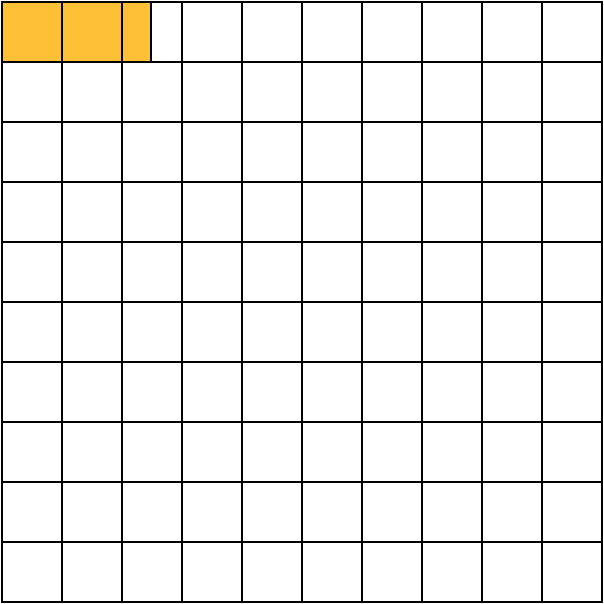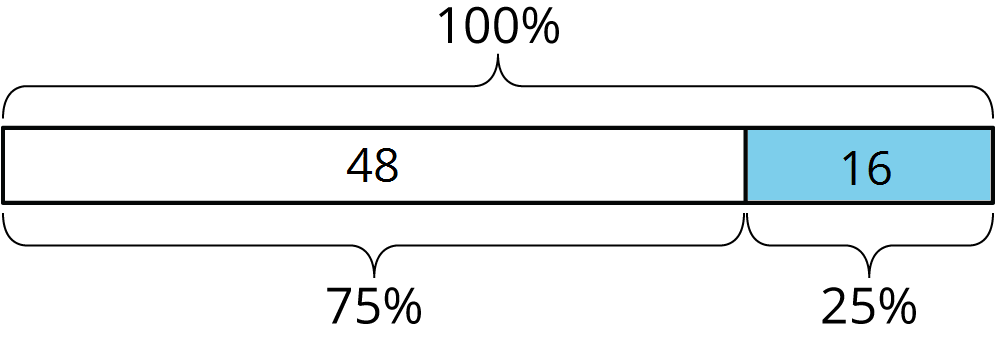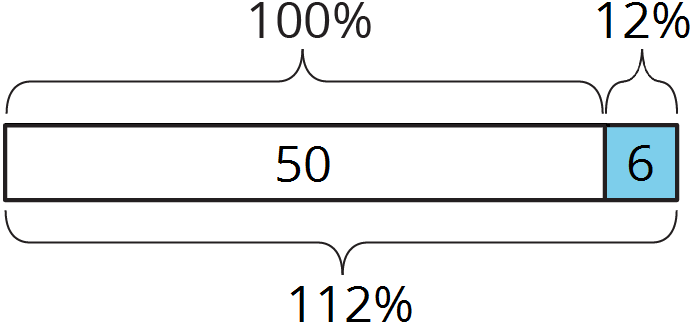Lesson 9
More and Less than 1%
Let’s explore percentages smaller than 1%.
9.1: Number Talk: What Percentage?
Determine the percentage mentally.
10 is what percentage of 50?
5 is what percentage of 50?
1 is what percentage of 50?
17 is what percentage of 50?
9.2: Waiting Tables
During one waiter’s shift, he delivered appetizers, entrées, and desserts. What percentage of the dishes were desserts? appetizers? entrées? What do your percentages add up to?
9.3: Fractions of a Percent
-
Find each percentage of 60. What do you notice about your answers?
30% of 60
3% of 60
0.3% of 60
0.03% of 60
-
20% of 5,000 is 1,000 and 21% of 5,000 is 1,050. Find each percentage of 5,000 and be prepared to explain your reasoning. If you get stuck, consider using the double number line diagram.
-
1% of 5,000
-
0.1% of 5,000
-
20.1% of 5,000
-
20.4% of 5,000

-
-
15% of 80 is 12 and 16% of 80 is 12.8. Find each percentage of 80 and be prepared to explain your reasoning.
-
15.1% of 80
-
15.7% of 80
-
To make Sierpinski's triangle,
- Start with an equilateral triangle. This is step 1.
- Connect the midpoints of every side, and remove the middle triangle, leaving three smaller triangles. This is step 2.
- Do the same to each of the remaining triangles. This is step 3.
- Keep repeating this process.

- What percentage of the area of the original triangle is left after step 2? Step 3? Step 10?
- At which step does the percentage first fall below 1%?
9.4: Population Growth
-
The population of City A was approximately 243,000 people, and it increased by 8% in one year. What was the new population?
-
The population of city B was approximately 7,150,000, and it increased by 0.8% in one year. What was the new population?
Summary
A percentage, such as 30%, is a rate per 100. To find 30% of a quantity, we multiply it by \(30\div 100\), or 0.3.
The same method works for percentages that are not whole numbers, like 7.8% or 2.5%. In the square, 2.5% of the area is shaded.
To find 2.5% of a quantity, we multiply it by \(2.5 \div 100\), or 0.025. For example, to calculate 2.5% interest on a bank balance of \$80, we multiply \((0.025)\boldcdot 80 = 2\), so the interest is \$2.

We can sometimes find percentages like 2.5% mentally by using convenient whole number percents. For example, 25% of 80 is one fourth of 80, which is 20. Since 2.5 is one tenth of 25, we know that 2.5% of 80 is one tenth of 20, which is 2.
Glossary Entries
- percentage decrease
A percentage decrease tells how much a quantity went down, expressed as a percentage of the starting amount.
For example, a store had 64 hats in stock on Friday. They had 48 hats left on Saturday. The amount went down by 16.
This was a 25% decrease, because 16 is 25% of 64.

- percentage increase
A percentage increase tell how much a quantity went up, expressed as a percentage of the starting amount.
For example, Elena had $50 in the bank on Monday. She had $56 on Tuesday. The amount went up by $6.
This was a 12% increase, because 6 is 12% of 50.
